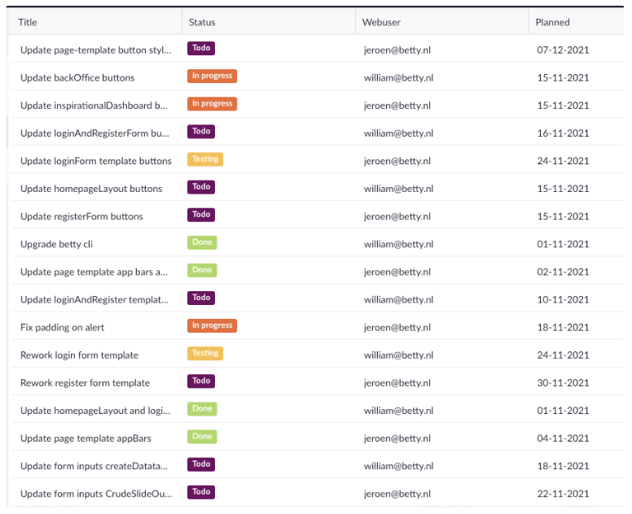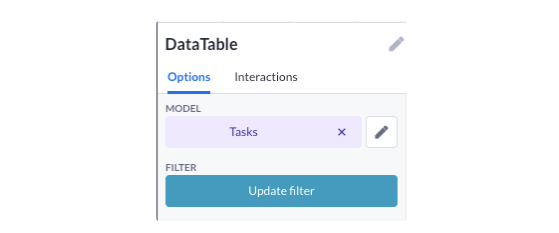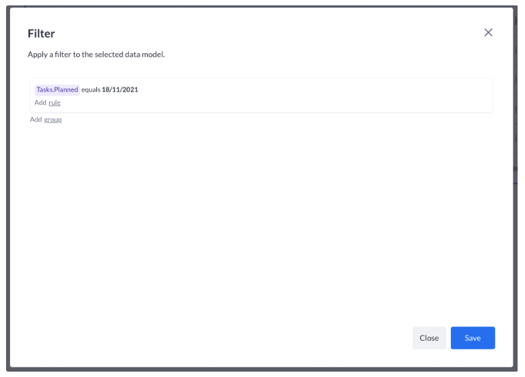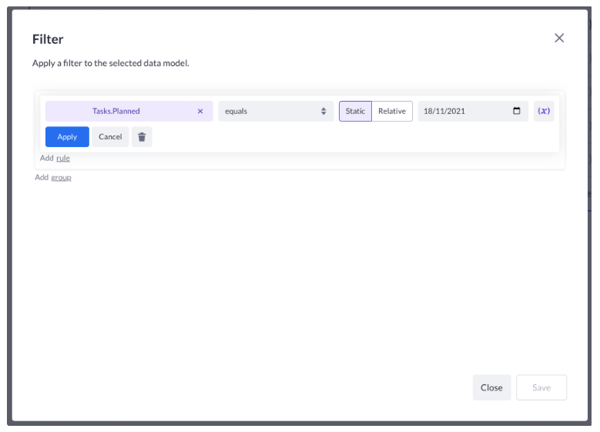Showing a list of tasks created today
Use case 5 of a 9-part series. In this article, you'll learn how to show a list of tasks that are created on today's date.
Before we start
Before we start, we will need some data. We’ve prepared the following tasks to show you how this works:
There is a belongs to relation between the tasks data model and web user data model.
This means a task can be assigned to only one web user. The other way around, a web user can have multiple tasks assigned to him/her.
Use the data table from our previous case
We go back to our table, and select it so that we see its options. We can press the button for Update filter.
We should see its current filter:
When we click on the filter row, it will become editable.
This time we won’t change the property or the comparator, but this time we will change the right-hand side.
So in edit mode, we see this:
Now we press the Relative button and see what happens:
We now see a list of relative dates. The default is Today, but you can see in the dropdown which relative dates we offer. You can read more about this here.
For this example, we will use Today. At the time of writing this document, it is the 15th of November 2021. So when we apply this filter and save it, we should see a table like this:

When we open this runtime page tomorrow, we should see the records of the 16th of November. Because relative dates are resolved at runtime.
Next up, Show a list of users and a list of their tasks.




